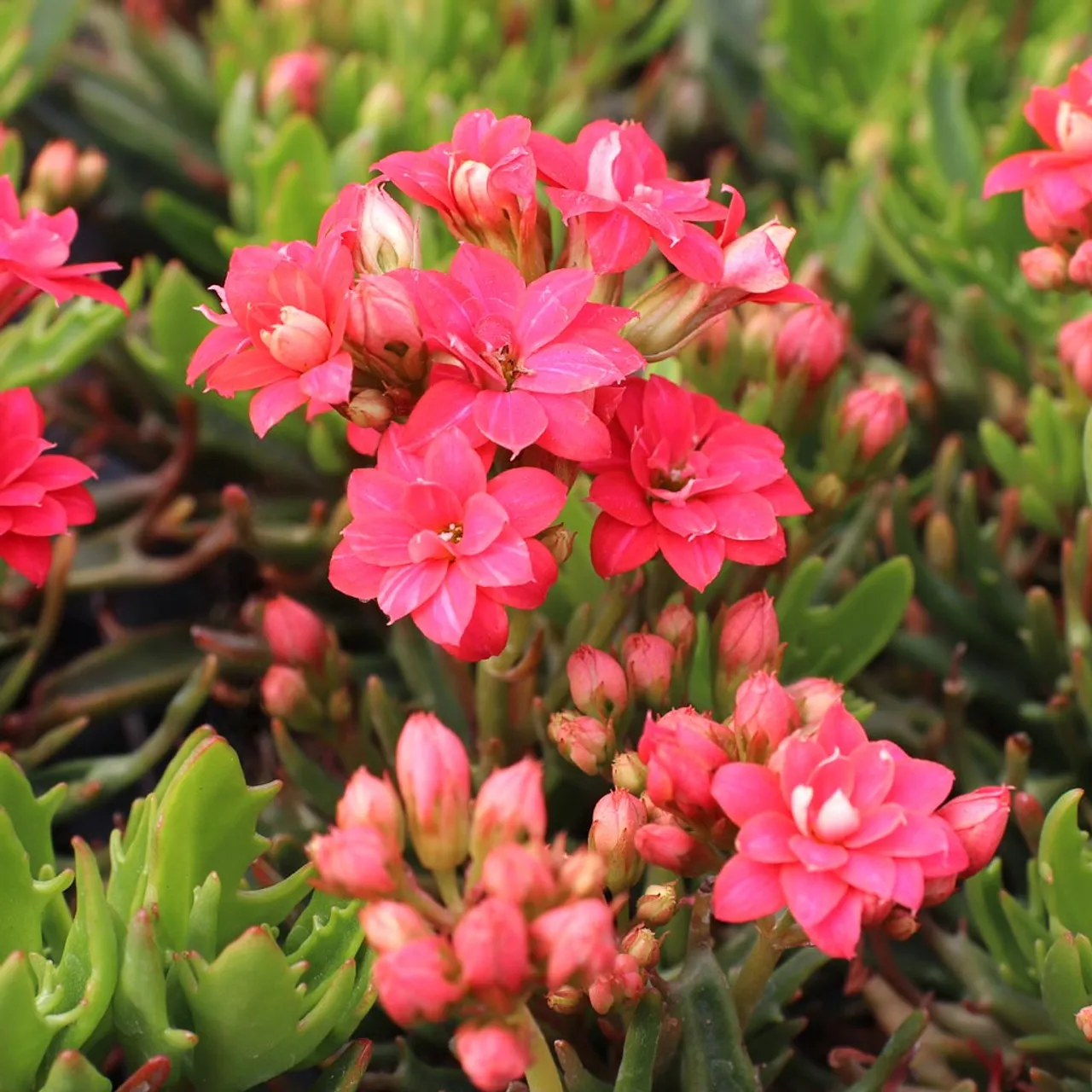Kalanchoe Tarantula Care Essentials
The Kalanchoe Tarantula, a captivating succulent, is a striking addition to any plant collection, known for its unique, textured foliage that resembles a spider’s web. Its distinctive appearance and relatively easy care make it a favorite among both novice and experienced plant enthusiasts. To ensure your Kalanchoe Tarantula thrives and displays its full beauty, understanding its essential care requirements is crucial. This guide provides you with the top 5 care tips you need to keep your Kalanchoe Tarantula happy and healthy. By following these simple guidelines, you can enjoy the beauty of this fascinating plant for years to come. From understanding its light needs to mastering watering techniques, this guide will equip you with the knowledge to cultivate a thriving Kalanchoe Tarantula.
Light Requirements for Kalanchoe Tarantula
Proper lighting is paramount for the Kalanchoe Tarantula’s health and aesthetic appeal. These succulents thrive on bright, indirect light. Direct sunlight, especially during the hottest parts of the day, can scorch their leaves, leading to brown spots and stunted growth. Conversely, insufficient light can cause the plant to become leggy, with elongated stems and a less compact appearance. Finding the right balance is key to encouraging vibrant foliage and, potentially, the appearance of flowers. The ideal location provides ample light without the harshness of direct sun. Proper lighting is essential for the Kalanchoe Tarantula to photosynthesize effectively, which fuels its growth and enhances its unique characteristics.
Sunlight Needs

Kalanchoe Tarantulas appreciate bright sunlight but are sensitive to intense, direct rays. Place your plant near an east or west-facing window where it can receive several hours of sunlight each day. If you only have a south-facing window, filter the light with a sheer curtain to prevent leaf burn. Signs that your plant is getting too much sun include yellowing or browning leaves, which indicate sun stress. If you observe these signs, relocate your plant to a spot with less direct light. Conversely, if the plant’s growth is slow or the stems are stretching, it may not be receiving enough light. In this case, gradually move the plant closer to the light source, monitoring its response.
Ideal Light Conditions
The ideal light conditions for a Kalanchoe Tarantula involve a balance of bright, indirect light. This can be achieved by placing the plant a few feet away from a sunny window or using a sheer curtain to diffuse the light. Avoid placing the plant in a completely dark corner, as this can inhibit its growth and health. The leaves of a healthy Kalanchoe Tarantula should display their characteristic colors and textures, which are often enhanced by the proper light exposure. Rotate the plant regularly to ensure all sides receive adequate light, which helps promote even growth and prevents the plant from leaning towards the light source. Artificial grow lights can also supplement natural light, especially during the darker months, ensuring your Kalanchoe Tarantula receives sufficient light year-round.
Watering Your Kalanchoe Tarantula
Watering is a critical aspect of caring for your Kalanchoe Tarantula. These succulents are adapted to arid environments and are susceptible to root rot if overwatered. Proper watering involves allowing the soil to dry out completely between waterings. This mimics the natural conditions where these plants thrive. The frequency of watering will depend on several factors, including the climate, the season, and the type of pot used. The key is to strike a balance, providing enough water to support healthy growth without causing the soil to remain soggy. Observing your plant and adjusting your watering schedule accordingly is the best way to ensure its well-being.
Watering Frequency
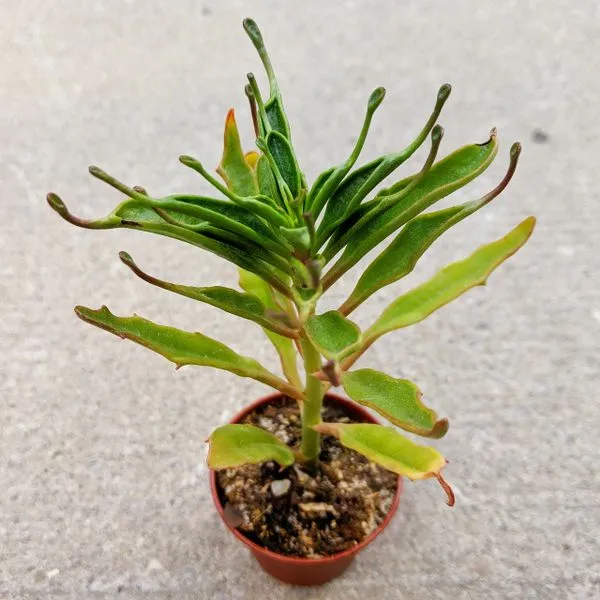
As a general guideline, water your Kalanchoe Tarantula when the soil is completely dry to the touch. In warmer months, this might be every one to two weeks, while in cooler months, the watering frequency may decrease to once a month or less. Always check the soil moisture before watering by inserting your finger into the soil. If the soil feels dry, it’s time to water. Water deeply, ensuring the water drains out of the drainage holes in the pot. Avoid letting the plant sit in standing water, which can lead to root rot. The right watering frequency helps maintain the health of the roots and prevents common problems associated with over or underwatering. Adjust your watering habits based on your plant’s specific needs and environmental conditions.
Signs of Overwatering and Underwatering
Overwatering and underwatering can both cause significant harm to your Kalanchoe Tarantula. Signs of overwatering include yellowing or mushy leaves, which are often accompanied by a foul odor emanating from the soil. Root rot is a common consequence of overwatering, which can eventually kill the plant. If you suspect you’ve overwatered, reduce the frequency of watering and ensure the pot has adequate drainage. On the other hand, underwatering can cause the leaves to shrivel, droop, and turn brown. The soil will feel extremely dry to the touch. If you notice these signs, water the plant thoroughly and resume your regular watering schedule, but don’t overdo it. Regularly monitoring your plant’s condition will help you identify these issues early and make necessary adjustments to your care routine.
Soil and Potting for Kalanchoe Tarantula
The right soil and pot are crucial for the health and growth of your Kalanchoe Tarantula. Succulents, in general, require well-draining soil to prevent root rot, which is a common problem for these plants. The pot should also facilitate proper drainage and allow for sufficient airflow around the roots. Selecting the appropriate soil mix and pot will contribute to the overall health and longevity of your plant. Making the correct choices in terms of soil composition and pot type can make a significant difference in your plant’s ability to thrive. A well-draining environment is essential for the Kalanchoe Tarantula to flourish.
Best Soil Mix
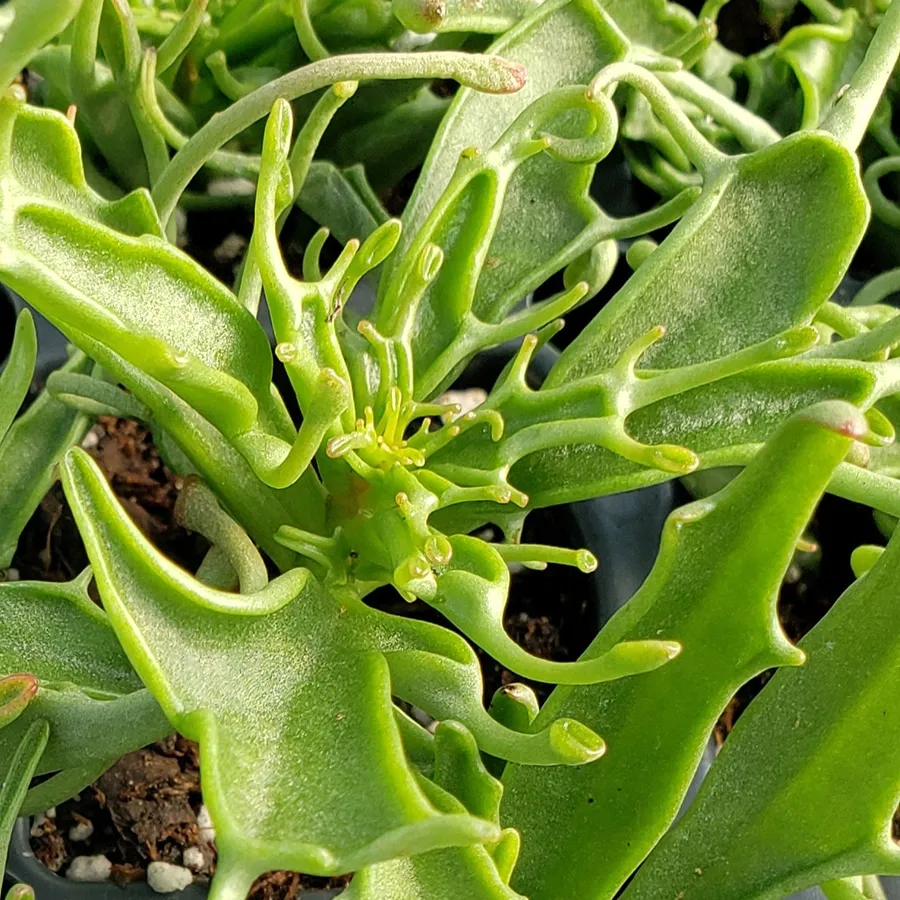
The best soil mix for Kalanchoe Tarantulas is one that provides excellent drainage. A good starting point is a commercially available succulent or cactus potting mix. This type of mix typically contains a blend of ingredients like coarse sand, perlite, and bark, which promote drainage and aeration. You can also create your own soil mix by combining these components. A common recipe includes equal parts of potting soil, perlite, and coarse sand. Avoid using regular potting soil on its own, as it tends to retain too much moisture. The right soil mix ensures that the roots do not sit in water, thereby preventing root rot and allowing the plant to thrive.
Choosing the Right Pot
The pot you choose should have adequate drainage holes to allow excess water to escape. Terracotta pots are an excellent choice for Kalanchoe Tarantulas because they are porous and allow the soil to dry out more quickly. Plastic pots can also be used, but ensure they have sufficient drainage and be cautious about overwatering. The size of the pot should be appropriate for the size of the plant. Choose a pot that is slightly larger than the root ball to give the roots room to grow, but avoid pots that are too large, as they can retain too much moisture. Repot your Kalanchoe Tarantula every couple of years, or when the plant outgrows its current pot, to refresh the soil and provide more space for root growth.
Temperature and Humidity Preferences
Kalanchoe Tarantulas are relatively adaptable plants, but they do have preferences for temperature and humidity that influence their well-being. Understanding these preferences will help you create an ideal environment for your plant to flourish. Moderate temperatures and low to moderate humidity levels are generally best. Avoid extreme conditions that can stress the plant and potentially damage its delicate foliage. By paying attention to the environmental conditions, you can help your Kalanchoe Tarantula thrive and showcase its unique characteristics.
Ideal Temperature Range
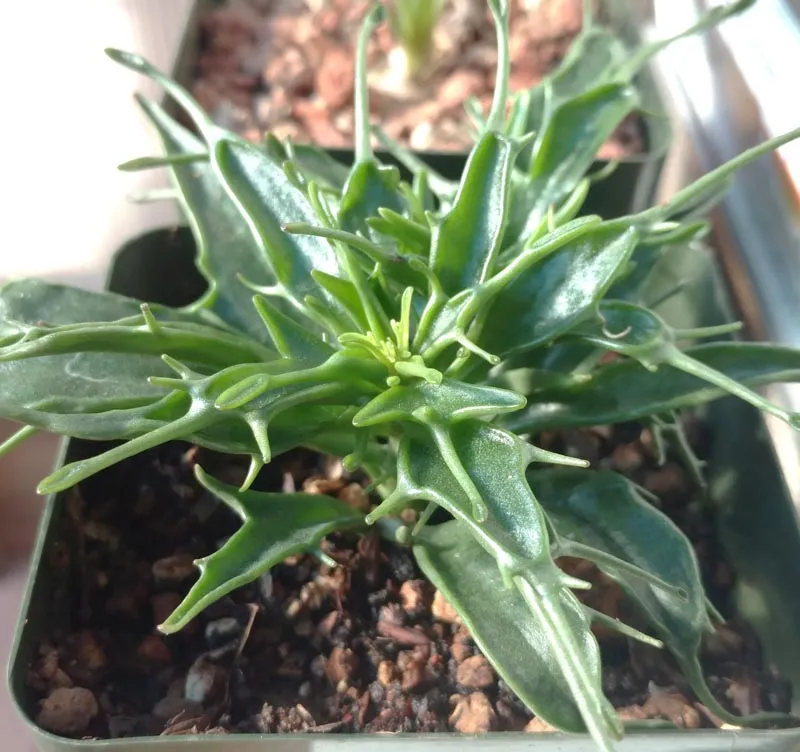
The Kalanchoe Tarantula prefers moderate temperatures, typically between 60°F and 75°F (15°C and 24°C). They can tolerate slightly cooler temperatures, but it is best to protect them from temperatures below 50°F (10°C), which can damage the plant. Avoid placing your Kalanchoe Tarantula near heat sources like radiators or vents, as this can dry out the soil and stress the plant. Similarly, protect it from drafts, which can also cause stress. These plants are generally well-suited to indoor environments, where temperatures are typically stable. Maintaining a consistent temperature range will help ensure the health and vitality of your Kalanchoe Tarantula.
Humidity Considerations
Kalanchoe Tarantulas thrive in low to moderate humidity levels. High humidity can lead to fungal diseases and other problems. Avoid placing your plant in overly humid environments, such as bathrooms or kitchens where humidity levels are consistently high. If you live in a particularly humid climate, ensure your plant has adequate airflow and consider using a dehumidifier if necessary. In general, the humidity levels found in most homes are suitable for Kalanchoe Tarantulas. Proper ventilation also helps maintain optimal humidity levels, which keeps the plant healthy. Ensuring the right balance of humidity is key to preventing problems and promoting the overall well-being of your Kalanchoe Tarantula.
Fertilizing Your Kalanchoe Tarantula
Fertilizing your Kalanchoe Tarantula is essential for providing the nutrients it needs to grow and thrive. While these succulents are not heavy feeders, providing them with the right amount of nutrients at the appropriate times will support their growth and potentially enhance their flowering. Understanding the best fertilizers and fertilizing schedule will help you keep your plant healthy and vibrant. Fertilizing is a simple yet effective way to ensure your Kalanchoe Tarantula gets the nutrients it needs to flourish. The proper fertilization routine contributes significantly to its overall health and aesthetic appeal.
Best Fertilizers
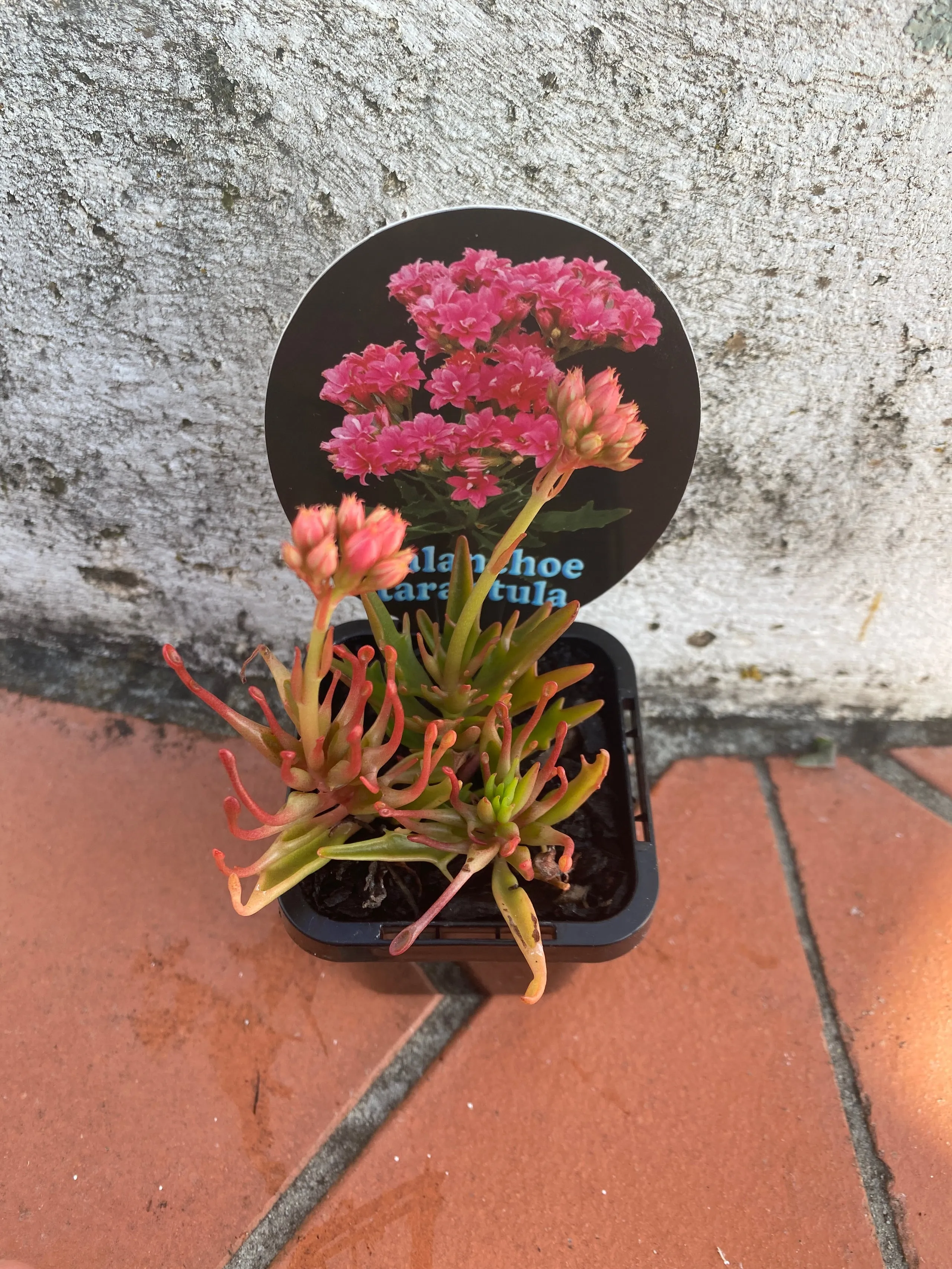
Choose a balanced, water-soluble fertilizer specifically formulated for succulents or cacti. Look for a fertilizer with a balanced NPK ratio (Nitrogen, Phosphorus, and Potassium), such as 10-10-10 or similar. Avoid fertilizers that are too high in nitrogen, as this can lead to excessive leaf growth at the expense of flowers. Alternatively, you can use a slow-release fertilizer, which provides nutrients over a longer period, reducing the need for frequent feeding. Always dilute the fertilizer to half the recommended strength to avoid over-fertilizing. This ensures that the plant receives the right amount of nutrients without causing damage. Using the appropriate fertilizer supports your Kalanchoe Tarantula’s growth and overall health.
Fertilizing Schedule
Fertilize your Kalanchoe Tarantula during the growing season, typically from spring through summer. Fertilize once a month during this period. Reduce or stop fertilizing during the fall and winter months when the plant’s growth slows down. Over-fertilizing can lead to salt buildup in the soil, which can harm the plant. Always follow the instructions on the fertilizer package and never exceed the recommended dosage. When fertilizing, water the plant thoroughly beforehand to help the fertilizer distribute evenly throughout the soil. The right fertilizing schedule and appropriate fertilizer contribute significantly to the overall health and beauty of your Kalanchoe Tarantula.
Common Pests and Diseases
Like all plants, Kalanchoe Tarantulas are susceptible to certain pests and diseases. Regular monitoring and early intervention are crucial for keeping your plant healthy. Recognizing potential problems and taking prompt action will help prevent severe infestations or damage. Being vigilant about pests and diseases will contribute to your plant’s long-term health and beauty. By understanding the common issues and their solutions, you can easily protect your Kalanchoe Tarantula.
Identifying Pests
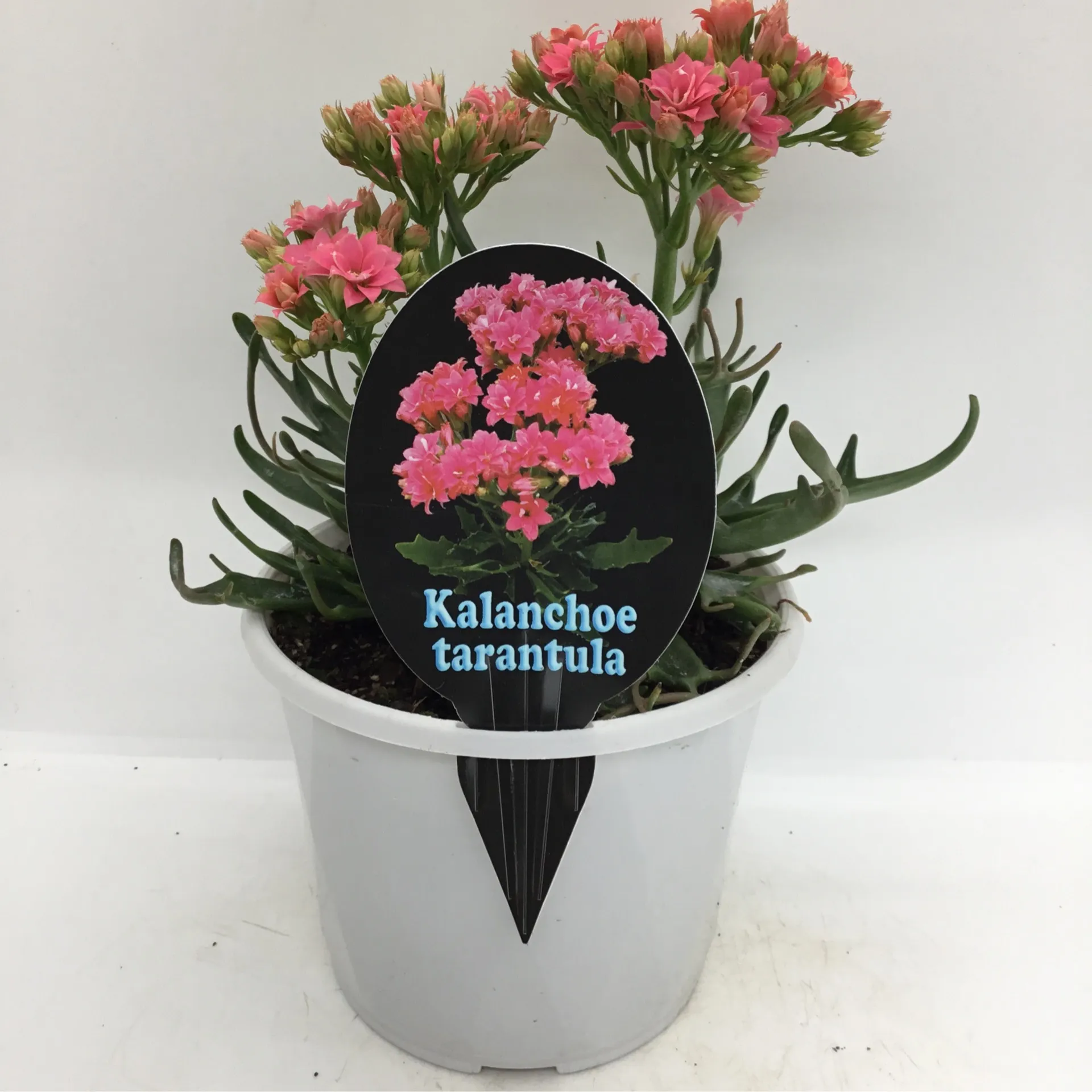
Common pests that can affect Kalanchoe Tarantulas include mealybugs, spider mites, and aphids. Mealybugs are small, white, cottony insects that often hide in the crevices of the plant. Spider mites are tiny pests that can be difficult to see with the naked eye, but they leave fine webbing on the leaves. Aphids are small, soft-bodied insects that can appear in various colors. Regularly inspect your plant, paying close attention to the undersides of the leaves and the stems. Use a magnifying glass if necessary. Early detection is key to controlling infestations. Identifying these pests promptly will enable you to take appropriate action before they cause significant harm to your Kalanchoe Tarantula.
Treating Pest Infestations
If you detect pests, take immediate action to control them. For mealybugs, you can remove them manually using a cotton swab dipped in rubbing alcohol. For spider mites, increase the humidity around the plant and rinse the leaves with water. In severe infestations, you may need to use insecticidal soap or neem oil. Follow the instructions on the product label carefully. For aphids, you can spray the plant with insecticidal soap or neem oil. Isolate the infected plant to prevent the spread of pests to other plants. Regular monitoring and prompt treatment are essential for keeping your Kalanchoe Tarantula healthy and pest-free. Always opt for the least toxic treatment option first, and reapply as needed. Maintaining a pest-free environment ensures your plant can thrive without undue stress.
Tips to maintain Kalanchoe Tarantula healthy
Maintaining a healthy Kalanchoe Tarantula requires consistent care and attention. By following these top 5 care tips, you’ll be well on your way to enjoying a thriving, beautiful plant. These tips encompass all aspects of care, from the fundamentals like light and water to more nuanced areas like fertilization and pest management. Consistent application of these practices will ensure your plant continues to thrive, displaying its unique beauty and charm for years to come. Regular care and attention are the keys to a healthy and vibrant Kalanchoe Tarantula, which will reward you with its unique beauty.
